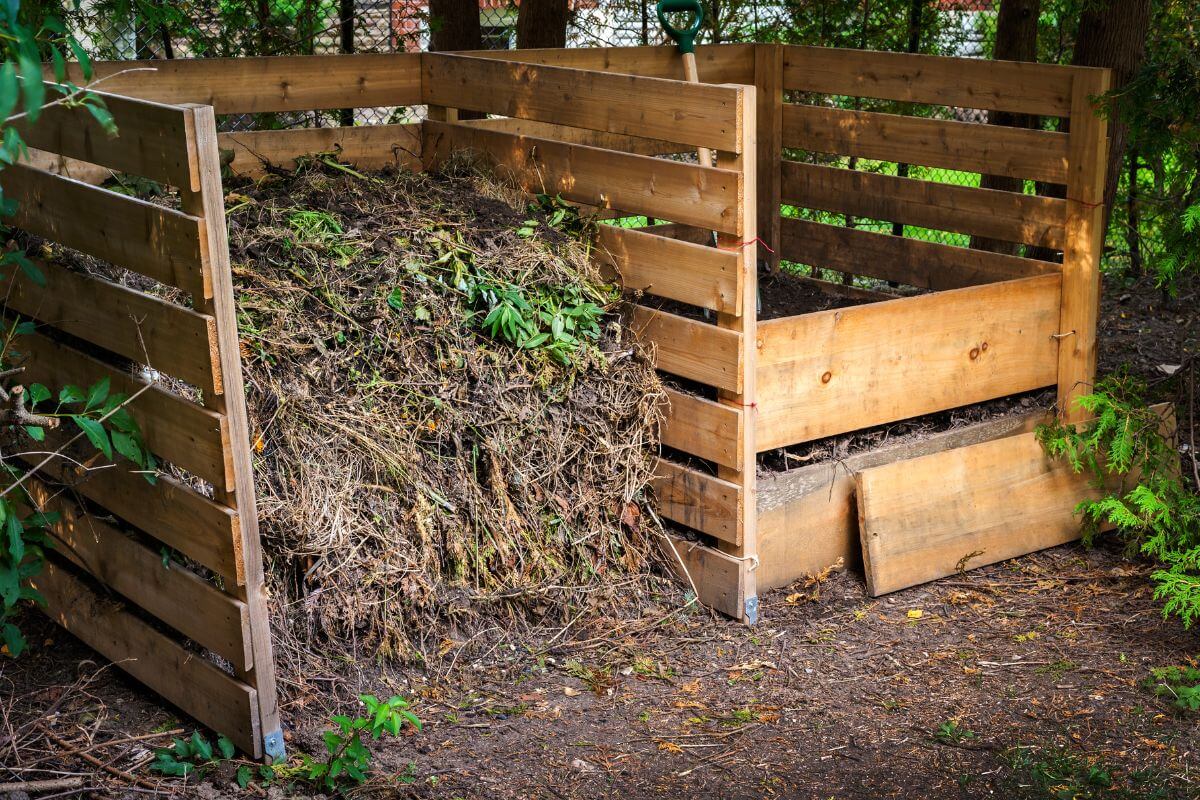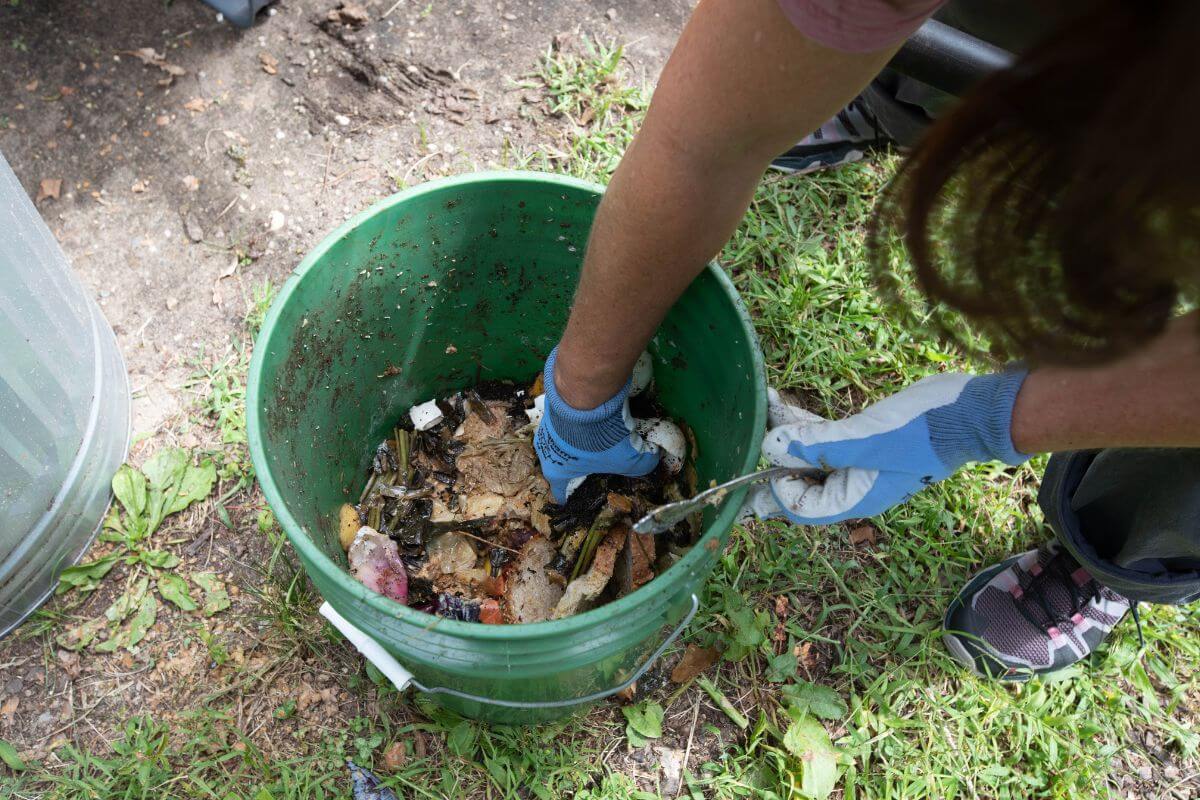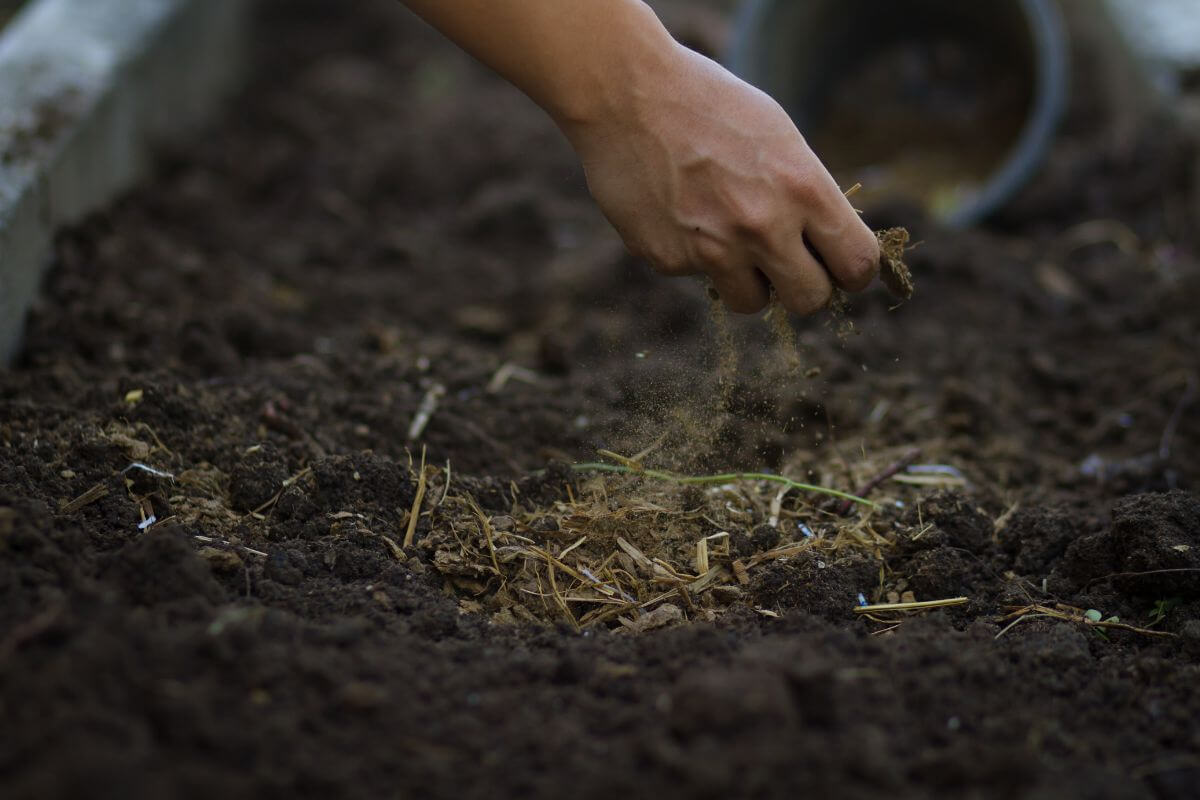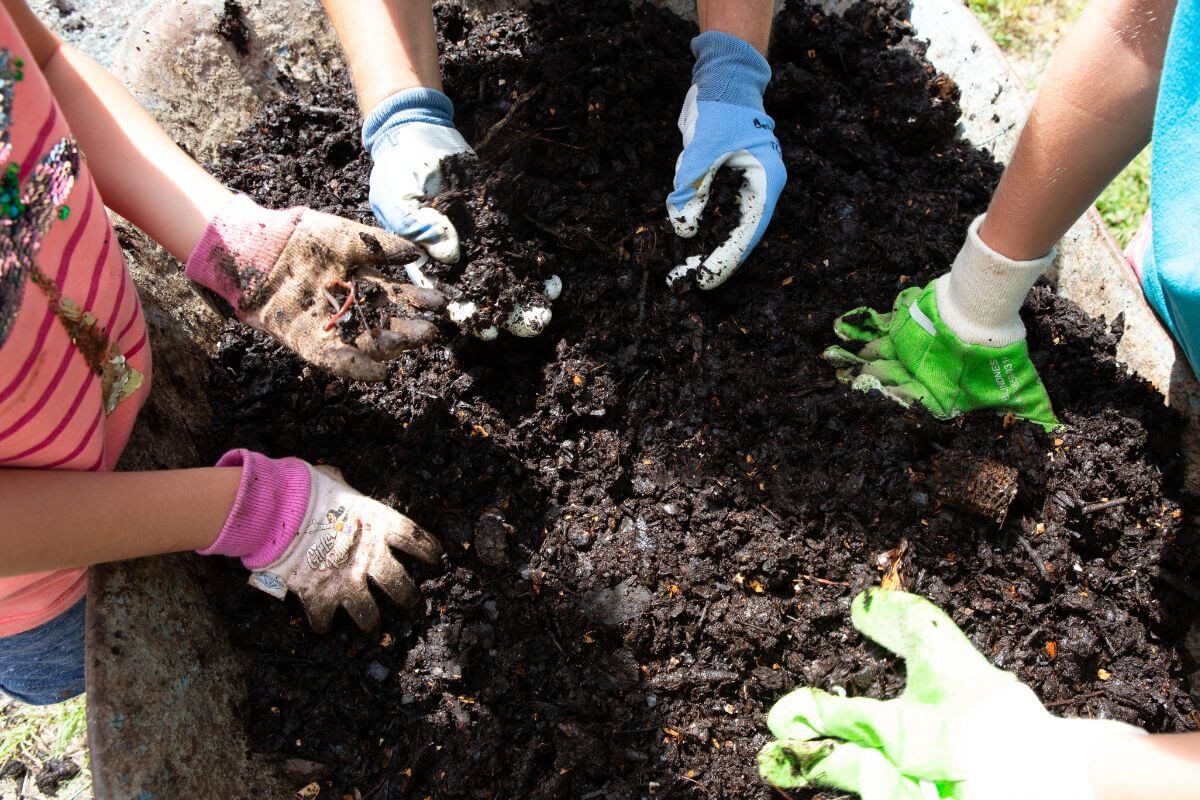I grew up with a compost heap in my garden, and for some reason I was always fascinated with it. I grew up thinking “as soon as I get my own place, I’m going to have my very own compost heap!”
I started my own compost heap around 9 years ago, and it was a daunting task. The heap I remembered from my childhood was this huge pile of amazing rich compost, that seemed to eat up garden scraps immediately.
Faced with starting on my own, I felt rather overwhelmed when I built this huge, empty space and was faced with the task of filling it! Luckily, I had moved into a place with wild backyard, so there was plenty of garden waste to fill it up to start.
After much trial and error, my compost heap is now the stuff of my childhood. Now my own children pick weeds and run off, shouting “I’m going to put this on the heap!”
In this article, I will cover everything you need to know about how to start composting and to build your first compost pile.
I will go through all the different types of compost materials you can use, what they are good for, and why you should choose them over others. I’ll also get into composting with kids to turn it into a family activity.
How to Start a Compost Pile

What You Need to Start Composting
First, you’ll need to choose the kind of composter you want. There are many commercially available online, but I prefer the homemade ones.
If you are making one yourself, the best type of composter, in my opinion, is one that is open at the top as well as the bottom. I like nature being able to access the compost, from the beneficial bugs to the birds that eat them.
For years, I had a robin that would appear whenever I was digging over my compost. I would dig a bit, then stand back and let him grab what he could before I resumed digging again.
Choose a Location for the Compost Pile
The best location for the compost heap is at the bottom of the garden, perhaps hidden by a bush or trellis.
As wonderful as compost heaps are, they are not the most attractive looking things. You’ll want it to be close to your vegetable patch, so you won’t have far to go when you’re adding compost to your garden.
Don’t be tempted to put it next to your kitchen though, as all those beneficial bugs that are more than welcome in your compost, won’t be so appealing in your kitchen.
What Size is Needed for a Compost Pile?
This depends on your needs, and how much compost you’ll generate. Generally, the ideal size of compost heaps is 3 to 5 square feet.
It’s also a good idea to have two sections. This way, you can let one side build up while the other stays empty.
When you need to get to your usable, finished compost, you can turn the full pile over onto the empty side.
- Related: Calculate Compost Needs
Gather Organic Materials for the Compost Pile

Your first deposit to your compost pile may feel a bit like a meager offering to the gardening gods, but as long as you add the right stuff, you’ll be off to a good start.
Remember, add as much dry brown material as wet green material. A general rule of thumb for the brown-green ratio is 50/50.
If you’re adding fruit and vegetable scraps, make sure you also add some dry grass or wood chippings over the top.
That is another good reason to have two separate piles. You can put some dry materials on one side, so you can cover your wet materials when you add them.
Cardboard and paper count as brown materials, so even if you don’t have a lot of suitable garden waste, you can always use egg cartons, newspapers, and the inner tubes of toilet and kitchen rolls.
- Related article: Compost Ingredients Guide
Watering and Turning the Compost Pile
If you are adding a suitable amount of green materials, you shouldn’t need to add any water. But if your compost is struggling and looking a little dry, then by all means give it some water.
It’s important to also take the step of turning the compost heap. Reasons you might want to turn your pile are:
- Aeration for the pile
- To mix up the organic matter
- If your compost is getting too hot, too smelly, or too dry.
How often you turn a pile is up for debate, because different gardeners use different composting methods. If you have a tumble composter, then it is advised that you turn it every three to four days to help with the decomposition process.
I have seen advice saying you should turn your compost every four to seven days to every four to seven months.
Personally, I only turn mine every year. If you’ve put on the right ratio of green to browns and layered it effectively, then you shouldn’t really need to turn your pile too often.
Turning too often can sometimes disrupt the composting process and lower the temperature of your compost pile.
My Composting Process
To start with, I use a compost bin with two separate sections. For clarity, I’ll call them side one and side two.
Here are the steps to my successful composting process:
- I fill up side one and then turn it over into side two when I need to get to the finished compost.
- I put any composting materials that have not decomposed into side two and then remove the compost from side one.
- Then I start to fill side one back up, adding a layer of material from side two whenever I add greens to give it a good mix.
- At the end of the year, I turn any uncomposted materials from side two into side one and dig out the compost from underneath.
- Then I restart the process. Filling up side two and adding material from side one to cover any layers of green.
This works well for me, but I’d encourage you to experiment and find a way of working that suits you.
Add the Compost to Your Garden Soil

Once your compost is ready, start adding it to your soil and mixing it in to make rich soil. Compost is ready to use when it looks like rich, brown, crumbly earth.
It will have an earthy smell and not contain any recognizable materials. That means they have decomposed. If you spot a twig or eggshell, chuck it back onto the pile.
To dig compost into the soil:
- Dig down to a depth that’s about the same as a spade blade
- Add your compost.
If you’re going for a no-dig method, just add the compost to the top of the soil. Alternatively, you can fork it in to mix it with the top-soil.
Do this after your harvest at the end of the growing season for the best results.
What Can Be Composted?
Carbon-rich and nitrogen-based make for great compostable materials. They’re known as “black gold” because they turn into nutrient-rich soil amendments for our plants and gardens.
Things to Compost From the Kitchen
Depending on your composter, you can compost pretty much anything from your kitchen.
For a conventional open-air composter, you can add kitchen scraps and food scraps like: raw fruit and vegetable peeling/scraps, eggshells, egg cartons, kitchen paper, tea leaves, coffee filters, and coffee grounds/grinds.
Things to avoid as an ingredient: meat, dairy products, milk cartons, and other products that have a waxy cover.
Things to Compost From Home and Office
There is more than food waste from your home that can be ingredients for your compost. Any natural materials can be composted.
This includes hair, nail clippings, untreated paper, cardboard, silk, cotton, linen, wool, non-plastic cotton swabs, used tissues, shredded newspaper, brown paper bags, and wood shavings.
Household waste to avoid as decomposable material: glossy paper, colored inks, bleached products like white paper,
Things to Compost From the Garden or Lawn
Garden waste has a great mix of green and brown items.
Things that can be added are: grass clippings, green leaves, dead leaves, plant cuttings, weeds, dead plants, flower heads, wood ash, pine needles, pond sludge, pond plants, soil and roots form dead pot-plants, bark, and wood chips.
If you have any large plants or branches to compost, cutting them up into smaller pieces will help to speed up the process.
One thing to be careful of. Diseased plants or cuttings should be burned rather than added to the compost. Adding it could lead to the spreading of diseases.
Avoid adding any chemical fertilizers as the compost is meant to be organic and replace the use of any synthetics.
Things to Compost From Pets and Animals
Pet hair can be composted, but you should not compost cat or dog feces, or litter trays if you feed them any meat.
Waste from animals that eat meat contains harmful pathogens and should never be composted. If your pet is a herbivore, then it is fine to compost pet waste.
If you have rabbits, guinea pigs or hamsters, you can compost droppings and the bedding materials. Other pet droppings that can be composted are birds, tortoises, and horses.
Other Composting Options
There are some compost machines that allow you to compost a lot more kitchen waste than open air composters. With these composting machines, you can also add raw meats, cooked food, oils and fats that will attract scavengers to your compost pile.
Some composting solutions that allow you to do this are EMO composting, like the Bokashi system, and combination composting with the compot.
Composting for Kids

Kids love getting messy, so getting them interested in composting shouldn’t be hard!
You can start to get them involved by sorting out what kitchen waste can be composted.
Open-air composters are the best for getting kids interested in outdoor composting, as they respond to the freedom of being able to add things by themselves.
Encourage them to help you with weeding and tidying the garden, and they can put things onto the compost as you go.
Kids will also enjoy the bug life that thrives in open-air composters. Have your kids help you turn over your compost and see how many bugs they can see.
If the kids are into bugs, you can also try worm composting!
Getting Started Composting Final Thoughts
All gardeners benefit from having their own compost. It helps use materials that would otherwise go to waste, and pretty much eliminates the need for fertilizer.
There are so many different ways of composting, and so much (often conflicting) advice, that I would say the best thing to do would be to choose a composter that looks like it suits your needs and to just start composting!
It is a steep learning curve when it comes to compost, and you will quickly pick up what works for you and what doesn’t. Get many pro composting tips here.
Getting Started Composting FAQs
How do I start a small compost bin?
Start a small compost bin with an empty plastic bucket or similar container. You don’t want anything too big because you won’t be using it all at once. A 5 gallon bucket is perfect for starting off with.
What materials do you need to start composting?
The only material needed to start composting is a compost bin. The rest of the composting materials are the items that you will be putting in the compost bin. This includes: leaves, grass clippings, paper products, cardboard, eggshells, coffee grounds, tea bags, fruit peels, vegetable peelings, etc.
How long does it take for compost to start?
This depends on several factors such as temperature, moisture content, size of the compost bin, type of soil, amount of organic matter added, and other variables. Some people claim that it takes about 3 months before there is any noticeable change in the quality of the finished product. Others claim that it could take anywhere between 6 weeks and 2 years depending on materials and conditions.
What is the easiest way to compost?
The easiest way to start composting is to buy a ready-made compost bin like this one online. These bins come pre-filled with everything you need to begin composting right away. They usually have holes drilled through the bottom which allows oxygen to enter the bin while preventing pests from escaping. If you already have a large area where you can place your compost bin then great!
Does a compost bin need a lid?
Yes, if you plan on keeping the contents inside longer than a few days. Lids help keep insects out of the compost pile and prevent rainwater from entering the bin. However, lids should not be used during hot weather since heat causes bacteria growth within the pile.
How often should you turn compost?
You should turn compost every week or two until the end result resembles rich black earth. Turning keeps air circulating around the pile, allowing more aerobic decomposition to occur. Aerobic decomposition occurs naturally by itself, but turning speeds things along.
How to turn compost in a plastic bin?
Turn compost in a plastic bin by lifting the top half of the bin and tipping it over onto its side. Then lift the opposite corner and tip it back into position. Repeat this process until the entire pile has been turned. Turning is necessary because it adds air, which is essential for good composting. It also helps aerate the pile, which is necessary for the decomposition process to occur.
Can I use my kitchen scraps in my compost bin?
Absolutely! Kitchen waste makes excellent compost. Just make sure that they aren’t contaminated with pesticides or chemicals. Also, avoid meat and dairy products as ingredients for your heap.
Sources:
- https://mde.maryland.gov/programs/land/recyclingandopertationsprogram/pages/compostbin.aspx
- https://directcompostsolutions.com/product-category/green-recyclable-compots/


